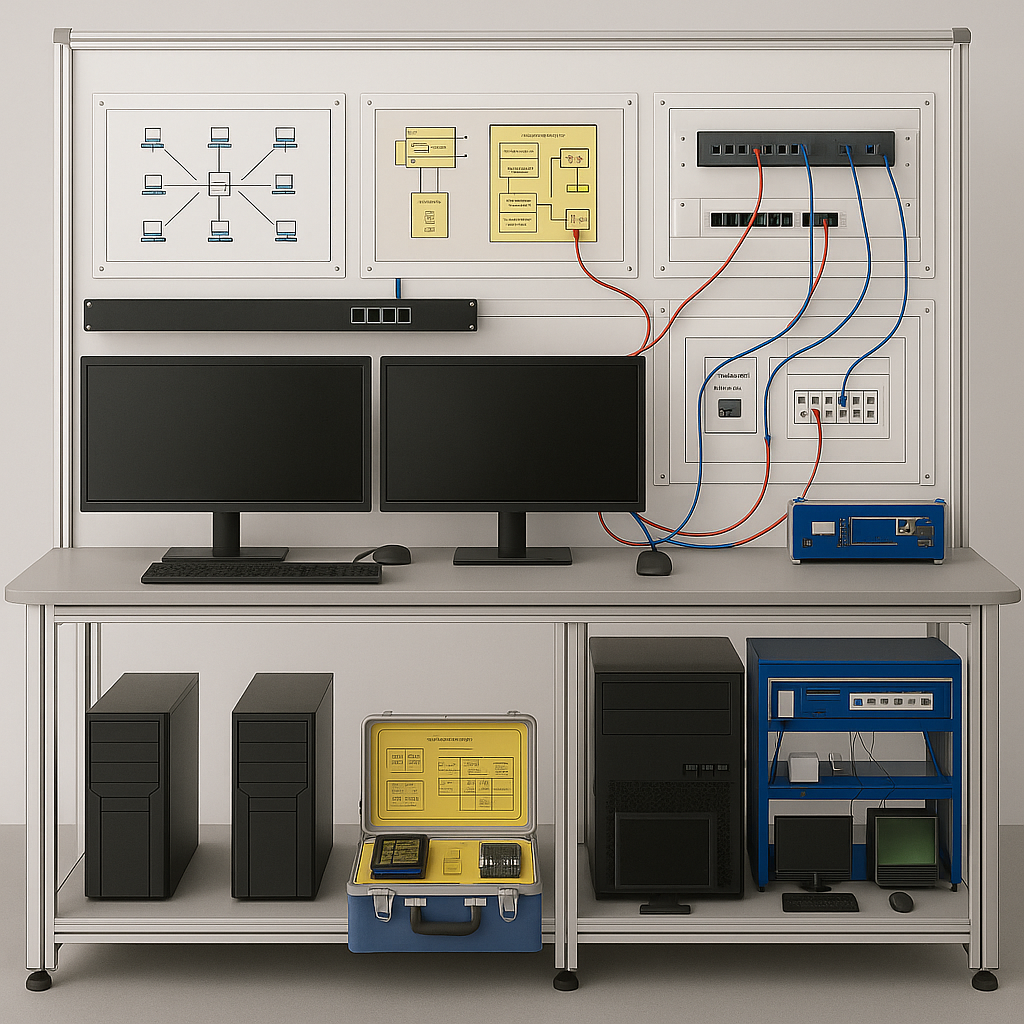TECHNICAL DOCUMENTATION
System Administrator Training Stand
The Junior System Administrator (JSA) classroom training stand is designed for practical instruction in modern IT infrastructure. The stand consists of advanced workstations, server equipment, infrastructure monitoring tools, and six specialized educational modules focused on networking, security, cabling, and modem technologies.
Functional Areas and Objectives
System Components
|
Component / Function |
Quantity |
Description |
|
Workstation sets (PCs with 3 NICs, WiFi, dual monitors, peripherals) |
14 |
Dedicated setups for individual practice with Linux and Windows environments, network simulation, and monitoring. |
|
Server rack with 3 servers, UPS, shelves, and network equipment |
1 |
Provides a virtualized infrastructure for learning server operations, backups, and resource allocation. |
|
Network router and PoE equipment |
1 |
Used for network segmentation, access point integration, and IoT readiness. |
|
Infrastructure monitoring system with 4 monitors and a controller |
1 |
Tracks infrastructure metrics and provides a control panel for live diagnostics. |
|
UPS systems analysis training stand |
1 |
Focuses on power backup solutions and operational continuity in IT environments. |
|
Computer networks and communication training stand |
1 |
Covers data transmission, network protocols, and diagnostics. |
|
Network assembly practice workstations |
6 |
Hands-on stations for physical network setup and component testing. |
|
Modem operation training stand |
1 |
Explains modem functionality and configuration for diverse applications. |
|
LAN network practice training stand |
1 |
Supports understanding and building of local area networks. |
|
Cable and network installation training stand |
1 |
Practical training in structured cabling and infrastructure layout. |
Integration and Educational Purpose
The training stand is intended for the education of system administrators, IT infrastructure specialists, and DevOps practitioners, ensuring full preparation in server, network configuration, monitoring, and cybersecurity. All modules are designed to support certification programs such as CompTIA Network+, Security+, and other IT industry standards.
It also serves the training needs of:
